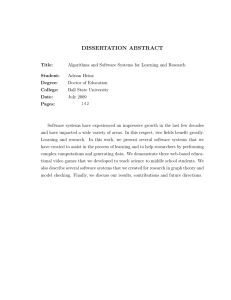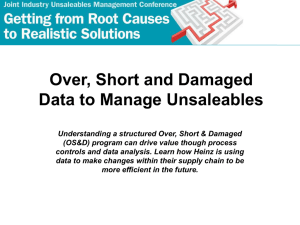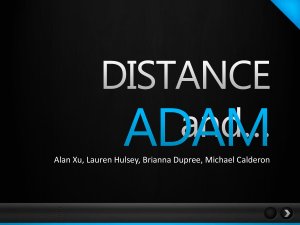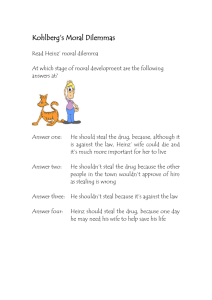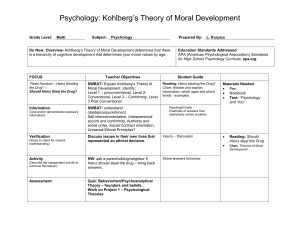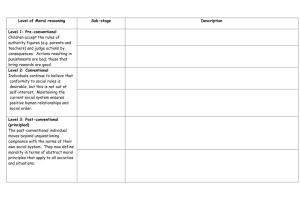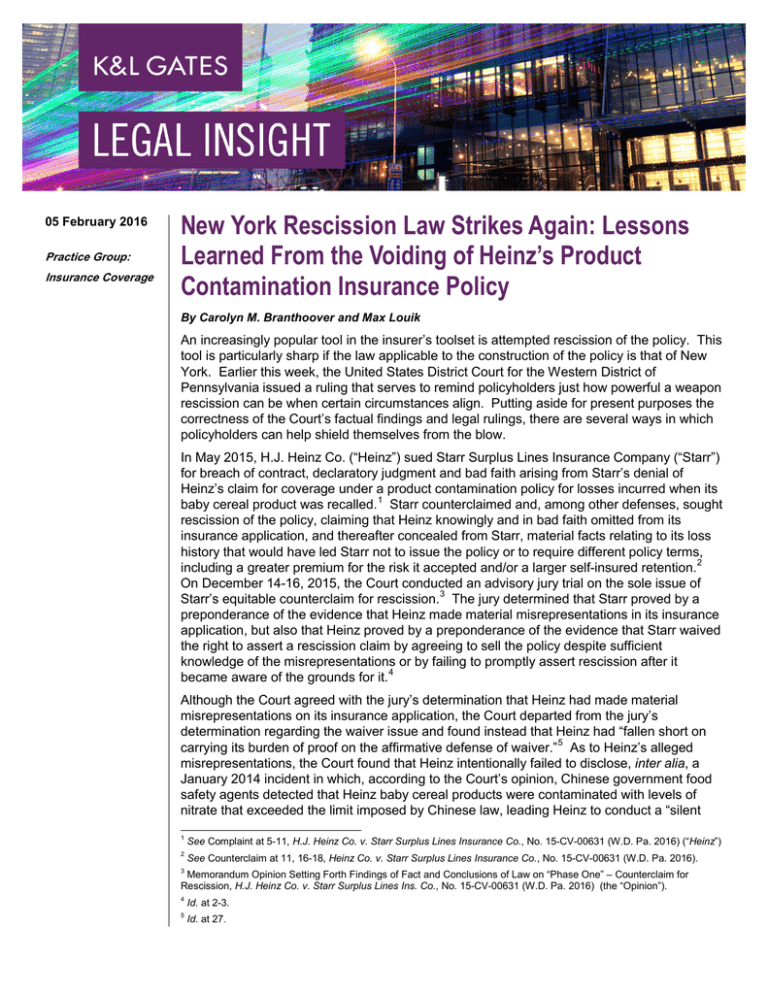
05 February 2016
Practice Group:
Insurance Coverage
New York Rescission Law Strikes Again: Lessons
Learned From the Voiding of Heinz’s Product
Contamination Insurance Policy
By Carolyn M. Branthoover and Max Louik
An increasingly popular tool in the insurer’s toolset is attempted rescission of the policy. This
tool is particularly sharp if the law applicable to the construction of the policy is that of New
York. Earlier this week, the United States District Court for the Western District of
Pennsylvania issued a ruling that serves to remind policyholders just how powerful a weapon
rescission can be when certain circumstances align. Putting aside for present purposes the
correctness of the Court’s factual findings and legal rulings, there are several ways in which
policyholders can help shield themselves from the blow.
In May 2015, H.J. Heinz Co. (“Heinz”) sued Starr Surplus Lines Insurance Company (“Starr”)
for breach of contract, declaratory judgment and bad faith arising from Starr’s denial of
Heinz’s claim for coverage under a product contamination policy for losses incurred when its
baby cereal product was recalled. 1 Starr counterclaimed and, among other defenses, sought
rescission of the policy, claiming that Heinz knowingly and in bad faith omitted from its
insurance application, and thereafter concealed from Starr, material facts relating to its loss
history that would have led Starr not to issue the policy or to require different policy terms,
including a greater premium for the risk it accepted and/or a larger self-insured retention.2
On December 14-16, 2015, the Court conducted an advisory jury trial on the sole issue of
Starr’s equitable counterclaim for rescission.3 The jury determined that Starr proved by a
preponderance of the evidence that Heinz made material misrepresentations in its insurance
application, but also that Heinz proved by a preponderance of the evidence that Starr waived
the right to assert a rescission claim by agreeing to sell the policy despite sufficient
knowledge of the misrepresentations or by failing to promptly assert rescission after it
became aware of the grounds for it. 4
Although the Court agreed with the jury’s determination that Heinz had made material
misrepresentations on its insurance application, the Court departed from the jury’s
determination regarding the waiver issue and found instead that Heinz had “fallen short on
carrying its burden of proof on the affirmative defense of waiver.” 5 As to Heinz’s alleged
misrepresentations, the Court found that Heinz intentionally failed to disclose, inter alia, a
January 2014 incident in which, according to the Court’s opinion, Chinese government food
safety agents detected that Heinz baby cereal products were contaminated with levels of
nitrate that exceeded the limit imposed by Chinese law, leading Heinz to conduct a “silent
1
See Complaint at 5-11, H.J. Heinz Co. v. Starr Surplus Lines Insurance Co., No. 15-CV-00631 (W.D. Pa. 2016) (“Heinz”)
2
See Counterclaim at 11, 16-18, Heinz Co. v. Starr Surplus Lines Insurance Co., No. 15-CV-00631 (W.D. Pa. 2016).
3
Memorandum Opinion Setting Forth Findings of Fact and Conclusions of Law on “Phase One” – Counterclaim for
Rescission, H.J. Heinz Co. v. Starr Surplus Lines Ins. Co., No. 15-CV-00631 (W.D. Pa. 2016) (the “Opinion”).
4
Id. at 2-3.
5
Id. at 27.
New York Rescission Law Strikes Again: Lessons Learned From the
Voiding of Heinz’s Product Contamination Insurance Policy
recall” in which it destroyed 245,000 pounds of product and suffered losses between $11-12
million. 6 According to the Opinion, Heinz offered evidence that the basis for its not reporting
this incident on the application was its assessment that this loss would not have been
covered by the type of policy it was applying for – a contaminated products insurance
policy. 7 The Court rejected Heinz’s proffered justification, noting that the insurance
application expressly sought the disclosure of all withdrawals, recalls and stock recoveries
“whether or not insured or insurable” under an accidental and malicious contamination
policy. 8
In departing from the advisory jury’s determination that Starr had waived its right to rescind
the policy, the Court, applying New York law, noted that Starr may not have been “perfect” in
its underwriting of Heinz’s policy, but “perfection is not the standard.” 9 According to the
Opinion, Heinz offered evidence and had argued, among other things, that “Starr had, or
should have obtained sufficient knowledge of the misrepresented information from other
previous insurance application(s),” as well as from disclosures in its 10-K and publicly
available information in newspaper articles recounting Heinz’s losses. 10 The Court found,
however, that, notwithstanding this evidence, Starr “did not have sufficient ‘knowledge’” to
support a waiver of a rescission remedy simply “because of certain information in a prior
application for a different type of insurance policy, or because a newspaper article discussing
the undisclosed incidents was contained in Starr’s underwriting files.” 11 According to the
Court, “[t]hese items, without more, would not trigger a reasonably prudent insurer to followup further.” 12 Putting aside the correctness of the Court’s departure from the advisory jury’s
determination, the Court’s ruling offers significant lessons.
For policyholders, the Heinz decision should serve as a cautionary tale. Insurers too often
include misrepresentation in the insurance application as one of dozens of standard
defenses to claims for coverage, sometimes regardless whether there is any legitimate basis
for the defense. But when the evidence supports a finding that material misrepresentations
were made, courts will consider seriously whether the circumstances justify the
“extraordinary equitable remedy” of rescission.13 There are, however, steps that
policyholders can take to reduce the likelihood of their falling prey to this extraordinary relief.
First, choice of law may matter. Insurance policies vary widely as to whether they contain a
choice of law provision. When a choice of substantive law appears in an insurance policy, it
is often that of New York. If open to negotiation, policyholders should consider carefully
whether, on balance, New York is a favorable governing law. In Heinz, the policy contained
a choice of law provision but choice of law was nevertheless hotly disputed, 14 and for good
6
Id. at 6.
7
Id.
8
Id. at 5 n.5, 6.
9
Id. at 12.
10
Id. at 20.
11
Id. at 12.
12
Id.
13
Id. at 26.
14
See id. at 9 n.12. Even though Starr’s policy contained a choice of law provision that stated that the “construction,
validity and performance” of the policy was to be governed by New York law, Heinz had argued that the policy’s service of
suit provision called for application of Pennsylvania law. See Order Re: Substantive Choice of Law Provisions at 2-3, H.J.
Heinz Co. v. Starr Surplus Lines Ins. Co., No. 15-CV-00631 (W.D. Pa. 2016). The Court ruled in Starr’s favor, holding that
New York law applied. Id. at 7.
2
New York Rescission Law Strikes Again: Lessons Learned From the
Voiding of Heinz’s Product Contamination Insurance Policy
reason. Although New York may be a favorable jurisdiction for policyholders on certain
issues, it is well recognized as unfavorable for policyholders on the issue of rescission. The
Heinz decision is just the latest in a line of anti-policyholder decisions, based on New York
law, on the issue of policy rescission. 15 According to the Court, Heinz’s “intentional and
unintentional misrepresentations” were both actionable under New York law, while under
Pennsylvania law, for example, a policyholder must have made a false representation
knowingly or in bad faith in order for the policy to be voided. 16
Second, policyholders need to take appropriate care during the application process when
answering questions regarding loss and claims history. Heinz paid dearly for not disclosing a
previous product recall because, in the Court’s view, Heinz supplanted its own judgment for
that of the underwriters regarding what would be considered material to the underwriters’
assessment of the risk.
Third, policyholders should remember that when an insurance claim arises, it may be
negatively affected by perceived deficiencies in policy application submissions,
notwithstanding the broker’s assistance in assembling the information. The Heinz Court
rejected Heinz’s argument that it should not have the policy rescinded because it relied upon
its insurance broker to complete the missing parts of the insurance application. 17 Having
itself certified that the statements set forth in the application were true and that no material
information was withheld, Heinz was on the hook for whatever representations were made
therein.18
Although the Heinz decision may appear troubling for policyholders, rescission of an
insurance policy remains an extreme remedy that most courts quite properly are reluctant to
impose. Even with respect to the Heinz decision, it is worth noting, if not underscoring, that
the advisory jury reached a determination contrary to that of the Court on the question of
waiver. These types of decisions are governing law and fact dependent, and the results are
not a foregone conclusion. Nonetheless, insurers can be expected to pursue the remedy,
especially when New York law governs policy interpretation.
Authors:
Carolyn M. Branthoover
carolyn.branthoover@klgates.com
+1.412.355.8902
Max Louik
max.louik@klgates.com
+1.412.355.6556
15
See, e.g., 128 Hester LLC v. New York Marine & Gen. Ins. Co., 5 N.Y.S.3d 69, 70 (N.Y. App. Div. 2015) (granting
rescission where the policyholder allegedly made material misrepresentations on its application for property insurance and
noting “[e]ven innocent misrepresentations are sufficient to allow an insurer to avoid the contract of insurance or defeat
recovery thereunder”) (internal quotation omitted); Kiss Const. NY, Inc. v. Rutgers Cas. Ins. Co., 877 N.Y.S.2d 253, 256
(N.Y. App. Div. 2009) (granting rescission of a commercial general liability policy on summary judgment).
16
See Opinion at 9 n.12.
17
See id. at 8.
18
Id. at 19. Additionally, according to the Court, under New York law, “[a] misrepresentation made by a broker is imputed
to an insured.” Id. at 8 n.11 (citing Bloom v. Mutual of Omaha Ins. Co., 161 A.D.2d 1047, 1049 (N.Y. App. Div. 3d Dept.
1990)).
3
New York Rescission Law Strikes Again: Lessons Learned From the
Voiding of Heinz’s Product Contamination Insurance Policy
Anchorage
Austin
Fort Worth
Frankfurt
Orange County
Beijing
Berlin
Harrisburg
Palo Alto
Paris
Boston
Hong Kong
Perth
Brisbane
Houston
Pittsburgh
Brussels
London
Portland
Charleston
Los Angeles
Raleigh
Charlotte
Melbourne
Research Triangle Park
Chicago
Miami
Dallas
Milan
San Francisco
Doha
Newark
Dubai
New York
São Paulo
Seattle
Seoul Shanghai Singapore Sydney Taipei Tokyo Warsaw Washington, D.C. Wilmington
K&L Gates comprises approximately 2,000 lawyers globally who practice in fully integrated offices located on five
continents. The firm represents leading multinational corporations, growth and middle-market companies, capital
markets participants and entrepreneurs in every major industry group as well as public sector entities, educational
institutions, philanthropic organizations and individuals. For more information about K&L Gates or its locations,
practices and registrations, visit www.klgates.com.
This publication is for informational purposes and does not contain or convey legal advice. The information herein should not be used or relied upon in
regard to any particular facts or circumstances without first consulting a lawyer.
© 2016 K&L Gates LLP. All Rights Reserved.
4

